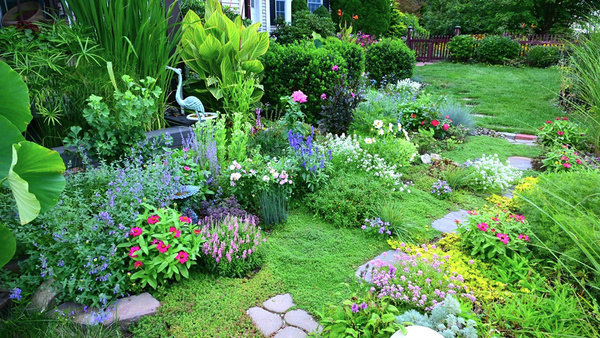How Can I Create a Flower Garden That Requires Less Maintenance?
Designing a low-maintenance flower garden is an excellent way to enjoy the beauty of blooms without the constant upkeep. If you’re considering such a project, incorporating smart planning and choosing the right plants are key. Professional Gardening Services can offer valuable guidance in setting up a low-maintenance garden, but you can also take several steps on your own to ensure that your garden remains vibrant and easy to manage.
Choose Low-Maintenance Plants
Selecting plants that require minimal care is the foundation of a low-maintenance garden. Look for species that are resilient and adapted to your local climate. Here are some top choices:
Perennials
Perennials return year after year and generally need less care compared to annuals. Choose varieties that thrive in your region’s conditions.
- Black-eyed Susans: These bright, daisy-like flowers are hardy and require minimal watering once established.
- Daylilies: Known for their vibrant colors and ability to tolerate a variety of conditions, daylilies are a great low-maintenance choice.
- Hostas: Ideal for shady areas, hostas offer lush foliage with minimal fuss.
Native Plants
Native plants are adapted to the local environment, making them easier to grow and maintain.
- Coneflowers (Echinacea): These hardy flowers are drought-tolerant and attract pollinators.
- Wild Bergamot (Monarda): Known for its striking blooms and resistance to pests, wild bergamot is a resilient choice for any garden.
Drought-Tolerant Plants
Selecting drought-tolerant plants can reduce the need for frequent watering.
- Lavender: Besides its delightful fragrance, lavender thrives in dry conditions and requires little watering.
- Sedum: Also known as stonecrop, sedum is excellent for dry, sunny spots and requires minimal care.
Implement Efficient Watering Techniques
Effective watering practices can save time and effort in garden maintenance.
Drip Irrigation
- Benefits: Drip irrigation delivers water directly to the roots of plants, minimizing water waste and reducing the need for frequent watering.
- Installation: Set up a drip irrigation system with adjustable emitters to match the needs of different plants.
Mulching
- Purpose: Mulch helps retain soil moisture and suppresses weeds, reducing the time needed for watering and weeding.
- Types: Use organic mulches like wood chips or straw, which decompose and enrich the soil over time.
Design for Ease of Maintenance
A well-thought-out garden design can simplify upkeep tasks.
Group Plants by Watering Needs
- Strategy: Arrange plants with similar water requirements together. This makes it easier to manage irrigation and avoid over or under-watering.
- Zones: Create distinct zones for different types of plants (e.g., dry areas and moist areas) to streamline watering and care.
Use Ground Covers
- Function: Ground covers help prevent weeds and reduce the need for mulching.
- Options: Choose low-growing plants like creeping thyme or sedum to cover large areas efficiently.
Incorporate Low-Maintenance Features
Adding certain features to your garden can further reduce maintenance efforts.
Hardscaping
- Paths and Patios: Incorporate paths or patios made from materials like gravel or pavers to minimize grassy areas that need mowing.
- Decorative Elements: Use decorative stones, planters, or raised beds to create attractive focal points with less ongoing care.
Automatic Systems
- Sprinkler Timers: Install timers on your sprinklers to ensure consistent watering without manual adjustment.
- Rain Barrels: Collect rainwater in barrels for use in irrigation, which reduces reliance on municipal water and supports eco-friendly practices.
Regular Maintenance Tips
Even a low-maintenance garden requires some care to keep it looking its best.
Seasonal Clean-Up
- Fall: Remove fallen leaves and debris to prevent mold and pests from taking hold.
- Spring: Prune back dead growth and check for any signs of pests or disease.
Minimal Fertilization
- Type: Use slow-release fertilizers to reduce the frequency of applications.
- Timing: Fertilize plants only as needed based on their growth and health.
Pest Management
- Monitoring: Keep an eye out for common pests and address problems early to avoid larger infestations.
- Natural Solutions: Use natural pest control methods, such as introducing beneficial insects or using neem oil, to keep pests in check without heavy chemical use.
Conclusion
Creating a flower garden that requires less maintenance involves choosing the right plants, implementing efficient watering techniques, and designing with simplicity in mind. By selecting hardy and low-maintenance plants, utilizing smart watering and mulching strategies, and incorporating easy-care features, you can enjoy a beautiful garden with minimal effort. With these steps, your garden can remain vibrant and inviting while fitting seamlessly into your busy lifestyle.




